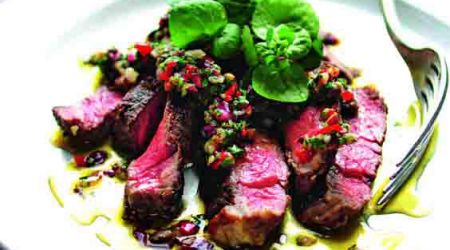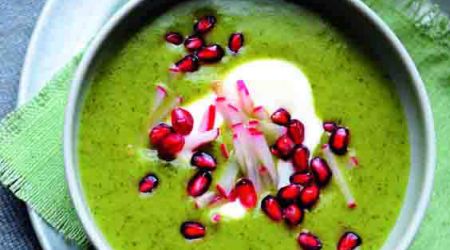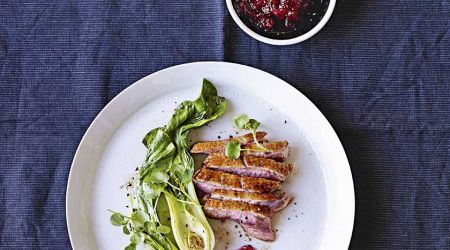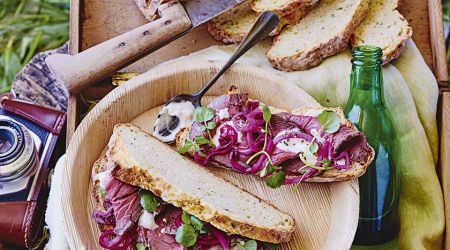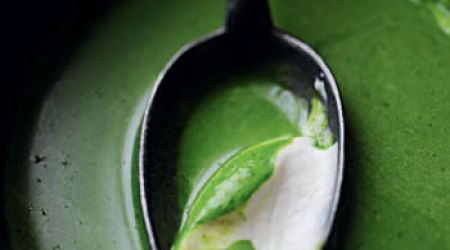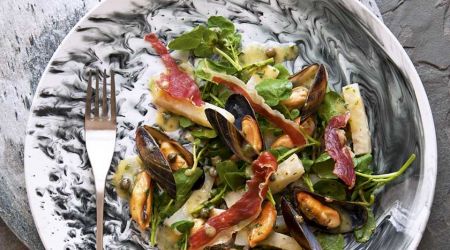Watercress
Its peppery kick may not find favour with the masses but, says Clarissa Hyman, it is just the job to enliven healthy wintery dishes.
The watercress lover tends to voice three main gripes whenever they meet a fellow devotee. Firstly, why does the cress de nos jours not boast quite so assertive a taste as it once did? Secondly, why is it largely the fate of this remarkable little plant to languish on the side of the plate, playing its familiar support role as ‘garnish’? And thirdly, what does that darned Mediterranean upstart rocket have that our true blue little leaf does not?
We call plants ‘cress’ if they have pungent or peppery leaves, but the fiery, full-on flavour of watercress has waned in popularity in recent years. In the same way that our consumer culture has engendered widespread resistance to fish and meat on the bone, yoghurt without sweeteners, or anything that tastes the slightest bit bitter, many find the tingling, mustardy hit of the beautiful emerald leaves simply too… well, too much. It seems curious, really, when you consider how we have so readily embraced the fiery kick of chilli, the pungent tang of garlic and the warm glow of ginger.
Perhaps watercress’s demise is down to us being careless about the values of the home-grown and familiar, or because we have tired memories of a miserable, wilted bunch of yellowing leaves poking out from the rear end of an overtrussed, overcooked, factory-farmed chicken. Maybe it’s because watercress is so obviously, screamingly good for you. I guess it’s a green thing.
Watercress grows in shallow rivers and streams and has been gathered from the wild for thousands of years. Its botanical name – Nasturtium officinale – refers to the Latin for ‘nose twister’, a verbal play on the potency of its leaves. Part of the mustard family, it grows most of the year, fading only during the hottest part of summer and coldest months of winter.
Commercially, it is cultivated in carefully controlled shallow, flowing water beds or in tanks fed by natural springs or boreholes (you should only pick wild watercress if you are totally confident that the running water is pollution-free). The first commercial beds in England were created by William Bradbury at Springhead, Kent in 1808. Today, a cooperative of farms along the base of the chalk uplands of Hampshire and Dorset are the main areas of production.
The cultivated strains and hybrids range in colour from green to bronze or almost black, but the sad truth is that some varieties have been bred to dampen down their natural, powerful punch.
Long before nutrients were analysed and understood, watercress provided a source of essential vitamins, iodine, sulphur and iron: the Greek general Xenophon made his soldiers eat it as a tonic, and observed ‘how pleasant it is to eat barley cake and some cress when one is hungry by a stream’.
A proverb of the time – ‘eat cress and learn more wit’ – summed up this vegetable’s status as brain food. It was also held to have remarkable powers of cleansing and was believed to aid in curing everything from freckles to hangovers, toothaches to baldness. It was eaten to give strength, courage and character.
Although peppery in taste and odour, watercress has a curious, counter-intuitive cooling effect: something noted by the 14thcentury royal chef Taillevent, who included a course of ‘watercress, served alone, to refresh the mouth’ in a banquet menu he once composed. Several centuries later, it was sold at markets in Victorian Britain as a breakfast food, with bread, for industrial workers. It was a vegetable for both rich and poor, for health more than for flavour.
Fresh and aromatic, yet still subtle, watercress is a wonderful salad base that works well with orange, fennel, walnuts, pecans, apples, pears and blue cheese. In the early 20th century the great food archivist Dorothy Hartley gave a lovely recipe for a layered watercress salad with new potatoes, tomatoes, parsley and a little cream, oil and vinegar. Eggs are also a perfect pairing, in omelettes, quiches or just scrambled. Chef Tom Aikens suggests a watercress and egg salad with grainmustard dressing as a simple but delicious starter, given crunch with some flaked almonds; he also offers a brilliant update on the steak sandwich by serving it on sourdough with watercress, fried shallots, parmesan flakes and lemon dressing.
Alternatively, finely chop and mix with butter to serve with grilled fish and meat, or make into a purée or sauce. When using it for cooking, do not cut all of the stems off: leave a little, as these have the most pungent flavour. And try not to overcook. If heated for more than a minute or so you risk muting both the vivid colour and flavour, and losing the attractive sharpness. The acclaimed Irish vegetarian chef Denis Cotter says he only ever adds the cress at the last second in risotto, pasta, sauces and soups, so that it just warms through. He also suggests a variation on a classic hummus dip with the addition of a watercress purée, which also makes an interesting sandwich filling or bruschetta topping. It works brilliantly – and gives its ubiquitous (some would say characterless) southern cousin a definite run for its money.
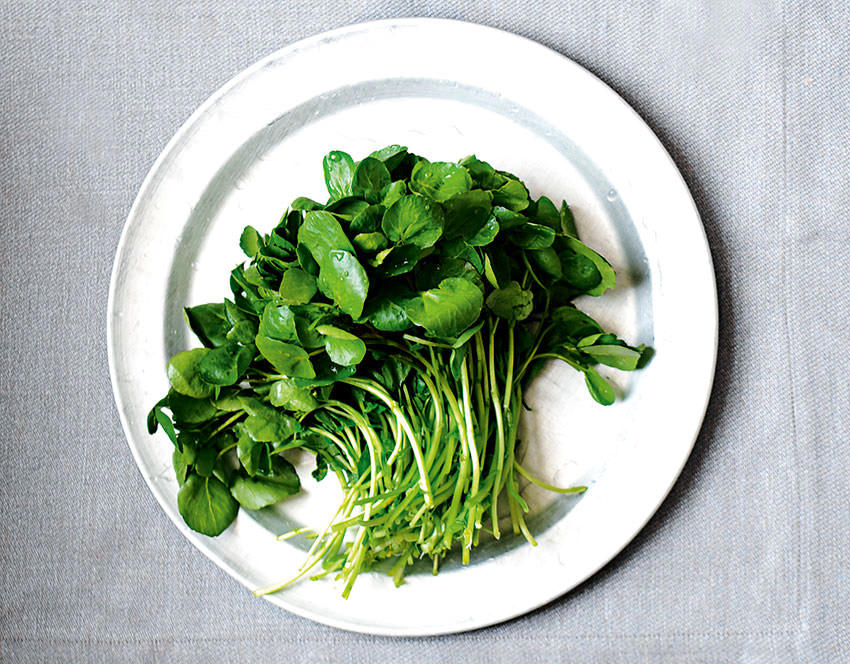
Recipes
Get Premium access to all the latest content online
Subscribe and view full print editions online... Subscribe


